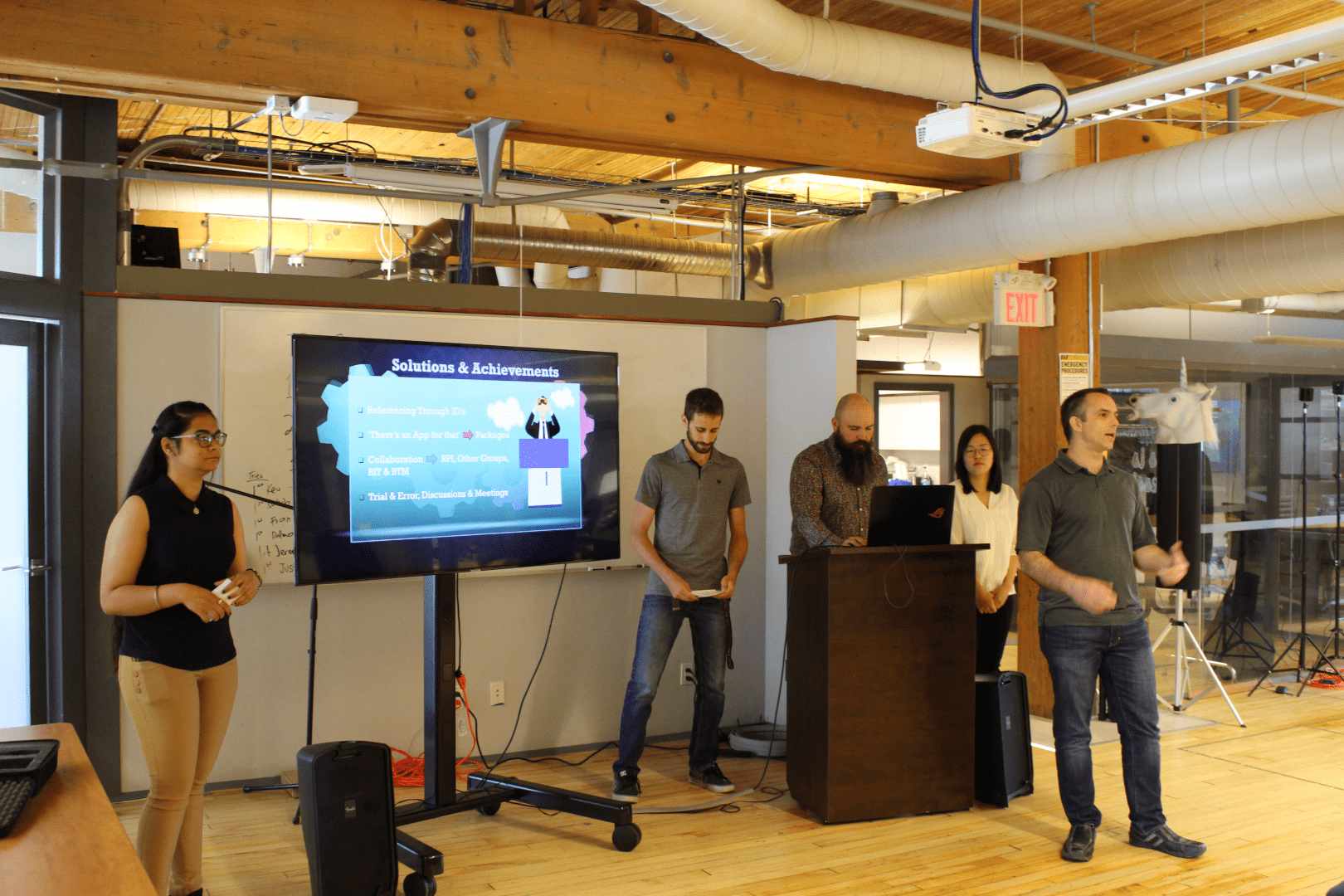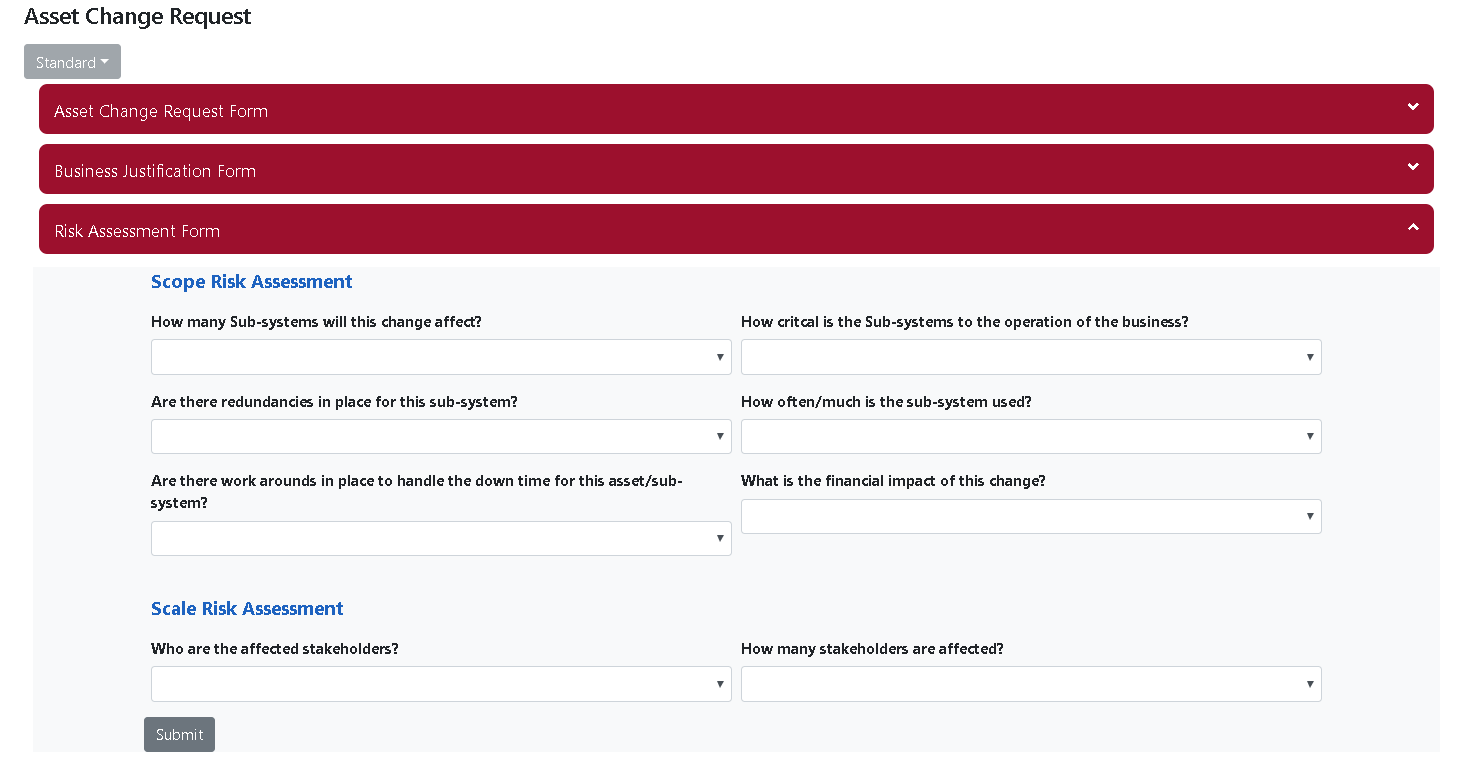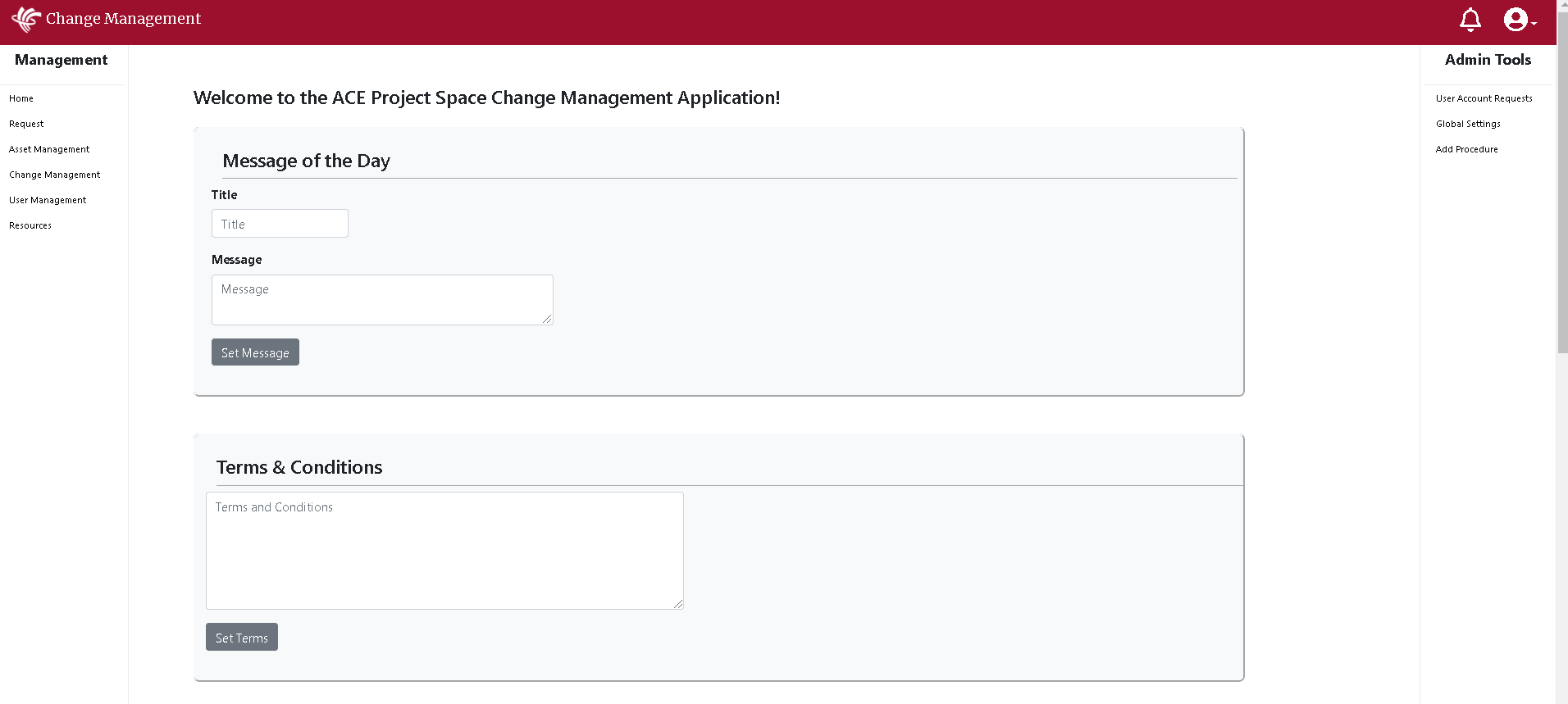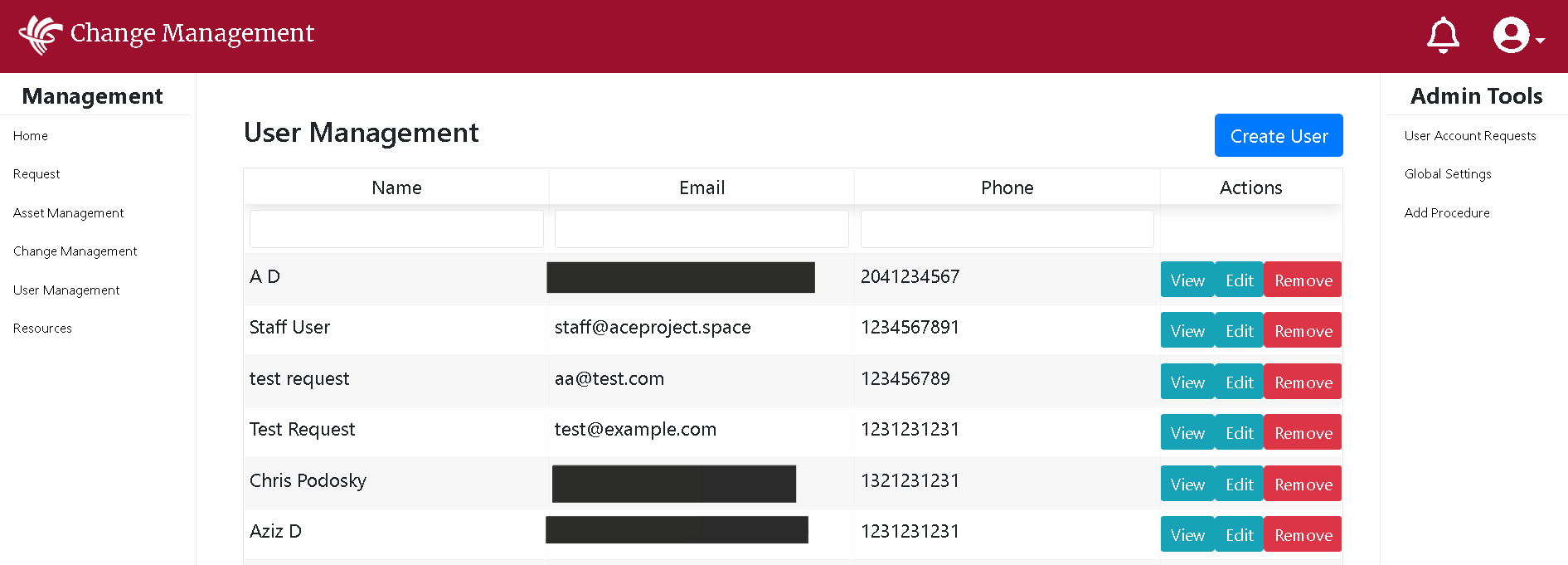Red River College – Change Advisory Board Application
Project Term: Summer 2019
The ACE Project Space required a robust and scalable application to better manage change and incident requests, assets and those using them. The system that was in use was clunky and did not provide the full range of functionality that the Change Advisory Board (CAB) was looking for. A student team at the ACE Project Space went about designing the application from scratch. The purpose was to deliver a working application with asset, user and change management functionality by the end of the four-month term. Completing the application was accomplished through extensive research and learning through Lynda, Code Academy and Udemy as well as collaboration with the RPI research group.
Building a robust application for Red River College
Originally, the College wanted to buy change management software. However, after realizing the cost of third-party solutions and a lack of scalability and customization, the CAB decided to contract students to build their system. The team of Business Information Technology and Business Technology Management students worked with faculty and staff within Applied Computer Education to deliver a solution that may one day be integrated across the College.
Deliverables
The main deliverables for this phase of the project were asset and change management.
What our students are saying
“It was great to learn so many new skills and concepts over the course of the work term. Many of the technologies used in our project are widely used in the local industry and it was beneficial to learn things that have practical use.
I feel confident that I could work on large-scale systems after participating in the Agile process and working with a team on a multi-phase application.” – Andrew Reid
“I gained a great deal of experience from the project term. Experiencing the practical side of the things that we learned in the previous terms was very beneficial. It was very constructive to practice Scrum in the project like the scrum meetings, daily scrum, etc. Leading some of the client meetings gave some hands-on experience about working with clients in a professional setting.” – Aziz Dhillon
“Before starting the BIT program, I had no previous IT experience. The rapid pace of the first few terms often left me feeling frustrated and wondering if I could become a developer. While in the project space I had the chance to work on a project using Meteor/React. Having the time to learn a single technology and apply that learning to a project was a real boost to my confidence. I was able to use the knowledge I had gained to solve a real-world problem and develop software from scratch using a technology I had never used before.” – Chris Podolsky
“I learned about Agile methodologies during term 2, but this was the first time that I have experienced how Agile works. In addition, I also learned how important design patterns are and depending on how the application is built could lead to the failure of the project. From developing the application with many components, I gained a strong understanding of the relationship between a parent component and children components. I believe that this experience will be very helpful for my career after graduation. Lastly, I will miss working with my team!” – Jihyeon Lee
“Working in a group to achieve a common goal while pooling all our unique abilities and personalities was an invaluable experience. My only regret was that it was only four months. I hold this term to be one of the most beneficial of my academic career not only for the technical skills that I have gained but also the confidence and personal growth I have made. To anyone unsure about project space, you will not regret it!” – Palmer Rouse
Technologies used
- Meteor
- React
- MongoDB
- Robo3T
- Cypress




